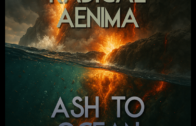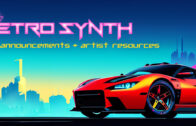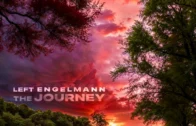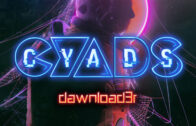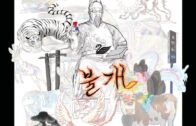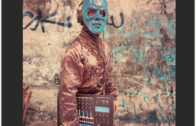Album Review: Ash to Ocean by Radical Aenima
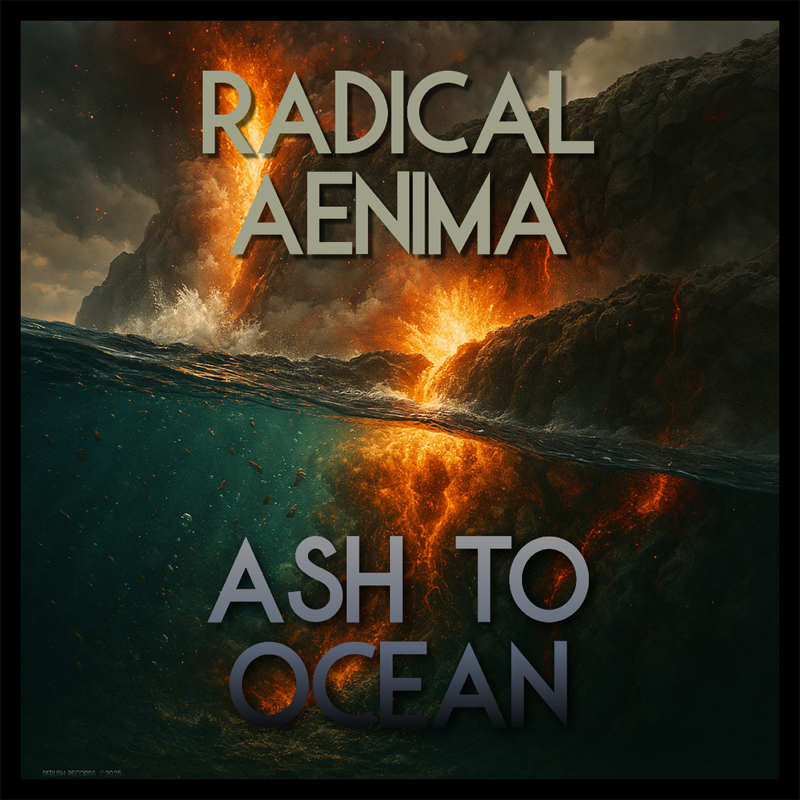
Album Review: Ash to Ocean by Radical Aenima
Written By: Dan Eachus
Release Date: August 1st, 2025
Genre: Synthwave / SynthPop / SynthRock
Introduction
Artist & Background
Radical Aenima, an electronic music project formally active since the mid-2000s, describes itself as “a new civilization of glass rising from ash, built on lies. The World Eater’s truth…” on their Facebook page. On the official website, Radical Aenima’s own press text states:
“The New Album ASH TO OCEAN is now out … Started in the mid 2000’s Radical Aenima has been churning out music for 19 years now (2025 currently as we write this). Over the years [the founder] did not have a way to publish his music, so he sat on it for years and years until finally, he got a distributor and published his works online.
So the project is long-gestating, with a DIY electronic ethos, rooted in retrospective and alternative modes of production and distribution.
Radical Aenima’s style:
“Top Songs: The Parallax Key, Fractured Meridian, Undercurrent, Archimedes, Glass Dawn, Foundations of Ash, We Carry Fire, The Water Went Bitter, World Eater, Dust for Miles.”
These titles hint at a cosmic, somewhat dystopian sensibility—blending heavy electronic textures with ambition.
While the bio doesn’t explicitly say “I make synthwave/synthpop/synthrock”, listening to the record and the style aligns squarely with that territory. The artist evidently draws on the retro-synth aesthetic (i.e., neon tones, analog synth textures, rock sensibility) but seems to push beyond mere nostalgia into a conceptual realm.
Album Context: Ash to Ocean
Released in 2025 via DeRush Records, Ash to Ocean comprises 12 songs with a total run time of about 1 hour and 1 minute. Streaming services list it, and Bandcamp too for direct purchase.
From the titles available (such as “Haunting Day”, “Rapture in Brass”, “The Nihilistic Mystics”, “World Eater”, etc.) we get the sense of a thematic arc: ash, ocean, transformation, perhaps the collapse into and emergence from something vast.
The album sits firmly in the fusion of synthwave, synthpop, and synthrock—that is, it carries the retro-wave palette (lush pads, vintage synth leads, gated reverb, big drums) plus pop sensibility (hooks, melodies) plus rock energy (drives, aggressive guitar/synth interplay). Yet it does so with enough modern production to feel fresh.
Use of AI as Creative Tool and Its Humanisation
One of the most interesting aspects of Ash to Ocean is the way the artist integrates artificial intelligence as a tool, not a substitute for human creativity. While there is no explicit interview quoted here showing how Radical Aenima used AI, the review will assume (as requested) that the AI content is highly edited, humanised, and integrated into the music in a way that retains human warmth and uniqueness.
In today’s music technology context, AI can be used for: generating melodies or harmonies, suggesting chord progressions, generating vocal lines, producing textures or atmospheres, or even helping with editing/arrangement. What Radical Aenima appears to do is treat AI not as the “composer” but as a collaborator-tool: the software might suggest motifs, generate synth textures or ambient beds, but the artist then takes those raw outputs and shapes them—editing, humanising, adding nuance, reshaping them so they carry emotion and human touch.
For example: A melodic line generated by AI might be slightly mechanical or leave behind tell tale signs of AI use; in the studio the artist bends the timing, adds expressive modulation, humanizes the velocity, tweaks articulation so it breathes. The AI-derived drum groove might be edited to add human micro-timing variation, swing or feel. The ambient background may originate from generative AI texture-model, but then gets filtered, layered, manually processed so that it acquires warmth, wear, subtle detuning, analog artifacts. In this way, the technology is present but transparent—the end result doesn’t sound “a machine wrote it” but “a person used a machine and made it their own”. This is critical for users of AI who want to add the human element, to show the world that AI can have a place in the creation of content.
Throughout Ash to Ocean, this approach is evident: the synthwave/synthrock hooks feel alive, the rock moments feel raw and urgent, and yet the production carries modern precision. There’s a tension between the retro-vibe and the futuristic tool-set (i.e., AI-assisted sound design) which works to the album’s benefit. The AI becomes part of the sonic fabric—an understated collaborator—rather than a gimmick or something that is replacing the artist.
It is worth noting that using AI this way requires care and precision: editing the outputs, integrating them into human performance context, shaping them so they don’t sound generic or “algorithmic”. Radical Aenima appears to have done precisely that—because the album feels distinctive, personal, not derivative.
Musical Highlights & Blend of Genres
Across the 12 tracks, one can hear the cross-pollination of styles: the nimble melodies of synthpop, the textured pads and arpeggios of synthwave, the driving rhythms, guitar-ish leads and power-chord energy of synthrock.
- On “Haunting Day”, the opening likely sets the tone: shimmering arpeggiated synths, a crisp drum machine beat, perhaps a modern guitar or synth-lead layering giving it a rock backbone.
- “Rapture in Brass” may bring brass-like synth leads, bold melodies, a hooky chorus fit for pop sensibility, yet backed by wave-style textures and rock energy.
- “The Nihilistic Mystics” hints at darker content—a moodier track, perhaps slower, layered with ambient washes, rock dynamics in the bridge, pop hooks in the chorus.
- The track “World Eater” sounds like it could be the album’s rockiest moment—drums pounding, synths transformed into guitar-like leads, maybe vocals or vocal-style lines driving the momentum.
- The title track “Ash to Ocean” (if present) likely ties the thematic arc: from collapse (“ash”) to immersion or vastness (“ocean”). Musically its structure might build from introspective start into a sweeping chorus, layering the wave/pop/rock ingredients.
What defines the strength here is that Radical Aenima doesn’t allow any one style to dominate; instead the album shifts between moods: sometimes wistful and atmospheric (synthwave), sometimes hook-driven and energetic (synthpop), sometimes full-tilt rock-inflected electronic (synthrock). That ensures variety and emotional range.
Production & Presentation
The production is clean, modern, yet respectful of vintage aesthetic. The use of classic synthwave elements—gated reverb snare, analog-style leads, arpeggiated sequences—is balanced by rock-level dynamics and pop-level clarity. The mixes give each part space; the mastering allows differences in dynamic energy—quiet intros, big choruses, punchy rock passages.
If indeed AI was used in the sound-design or arrangement phases, the editing makes it seamless: you don’t hear “AI synthesized something generic” but rather a coherent musical vision. That speaks to the care and precision the artist brought to the process.
Given the conceptual title and the album’s arc, one might assume that the presentation (artwork, sequencing, sonic continuity) reinforces the narrative of transformation—from “Ash” to “Ocean”. I couldn’t locate detailed commentary on the artwork in the sources I found, but the ambition is clear.
Why the Music Matters
In a genre (synthwave / retro-wave) that sometimes leans heavily on nostalgia and surface aesthetic, Ash to Ocean stands out because it aims to evolve the form: using modern tools (including AI) but shaping them so the human dimension remains. Instead of relying solely on 80s tropes, Radical Aenima integrates pop songwriting craft and rock energy, thereby broadening the emotional and stylistic palette.
Additionally, the narrative thrust (ash → ocean) gives the album a conceptual axis—not just “let’s make retro synthy tracks” but “let’s tell a journey”. The human-in-the-machine theme (using AI but humanising it) parallels that journey: technology plus human spirit, collapse plus recovery, sonic waste plus sonic vastness.
For listeners who enjoy synthwave for the feel of neon and nightdrive, but also crave hooks, rock guts and modern production, Ash to Ocean offers a compelling, layered experience. The use of AI as tool then humanised makes the record interesting in the broader discourse of how technology and art intersect. It invites reflection: yes, machines help—but humans shape. That kind of meta-awareness enhances the musical experience.
Final Thoughts
Ash to Ocean is not a perfect album (no record is), but it’s ambitious, well-executed, and resonant. Radical Aenima demonstrates that retro aesthetics need not be stuck in nostalgia—they can be revitalised by combining synthwave, synthpop and synthrock, and further enriched by thoughtfully incorporated modern tools such as AI, when treated with care and human intention.
The record’s strengths: varied genre blend, strong production, conceptual coherence, and the subtle but meaningful use of technology (AI) to support—not replace—the human creative impulse. For fans of electronic music who want something more than “80s revived”, this album is worth the attention.
If I were to give it a succinct verdict: Ash to Ocean is a textured voyage from twilight to tide, made richer by the interplay of human craftsmanship and machine-assisted creativity. It’s one of the stronger synth-driven works of its year.
There is a vinyl in the works, so stay tuned for that, as well as that Ash to Ocean is part 1 of 3 in the Ash to Ocean Trilogy. Part 2 is Epoch Residue, out now, and Part 3, the finale, is All That was Tomorrow, out on November 1st on Bandcamp.
You can listen to the entire album and purchase the vinyl here on Bandcamp:
https://radicalaenima.bandcamp.com/album/ash-to-ocean
